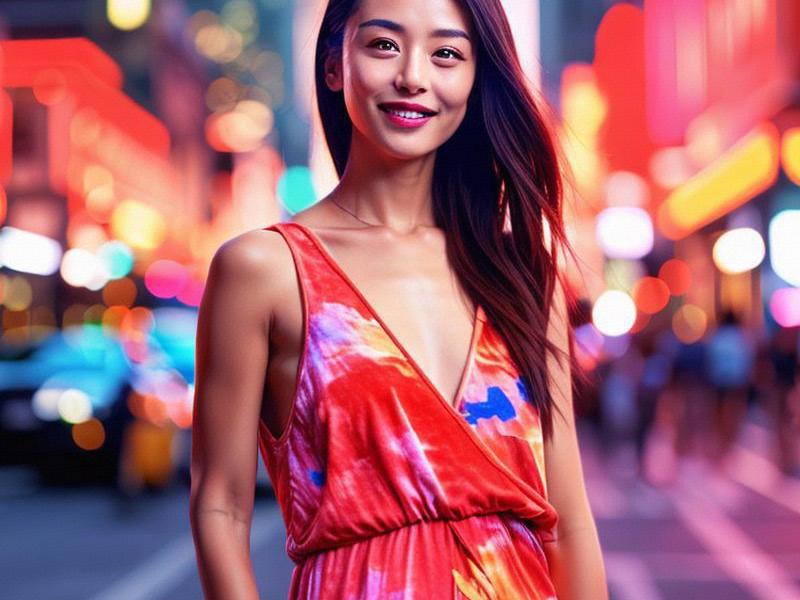This article delves into the concept of "Shanghai beauties," exploring their historical roots, cultural significance, and how they have evolved in modern times. It examines the influence of Shanghai's unique blend of tradition and modernity on its women, focusing on their beauty standards, fashion sense, and social roles.

In the heart of China, where the Huangpu River meets the bustling metropolis of Shanghai, there exists a term that has captured the imagination of many: "Shanghai beauties." This phrase is not merely a compliment but a cultural phenomenon that reflects the city's rich history, its rapid modernization, and the unique blend of tradition and innovation that defines Shanghai. The concept of "Shanghai beauties" transcends mere physical appearance, encompassing a complex interplay of social, cultural, and historical factors.
The origins of the "Shanghai beauty" can be traced back to the late 19th and early 20th centuries, during the period when Shanghai was known as the "Paris of the East." This was a time when the city was a hub of international trade and cultural exchange, attracting people from all over the world. The cosmopolitan nature of Shanghai allowed for a melting pot of cultures, which in turn influenced the local fashion, lifestyle, and beauty standards.
During this era, the "Shanghai beauty" was characterized by a blend of Eastern and Western aesthetics. Women in Shanghai began to adopt Western fashion trends, such as qipao (a traditional Chinese dress) tailored in a more form-fitting style, paired with high heels and makeup. This fusion of styles not only reflected the city's openness to foreign influences but also symbolized the empowerment and modernization of its women.
新上海龙凤419会所 The rise of the "Shanghai beauty" was also closely tied to the city's economic prosperity. Shanghai's status as a major trading port brought wealth and opportunities to its residents, allowing them to indulge in luxury goods and services. This period saw the emergence of beauty salons, fashion boutiques, and other establishments that catered to the city's affluent population. The "Shanghai beauty" became a symbol of success and sophistication, embodying the city's vibrant spirit.
However, the concept of the "Shanghai beauty" was not without its challenges. During the early 20th century, Shanghai was also a city of contrasts, where the glittering facade of modernity coexisted with social inequality and political turmoil. The "Shanghai beauty" was often associated with the city's nightlife and entertainment industry, where women worked as dancers, singers, and actresses in cabarets and theaters. While these women were celebrated for their beauty and talent, they also faced exploitation and discrimination.
The image of the "Shanghai beauty" underwent significant changes during the mid-20th century, particularly during the Chinese Civil War and the subsequent establishment of the People's Republic of China. The cultural revolution of the 1960s and 1970s further reshaped beauty standards, emphasizing simplicity and practicality over glamour and individuality. During this period, the concept of the "Shanghai beauty" faded from public consciousness, as the city's focus shifted to industrialization and collectivism.
上海龙凤419油压论坛
It was not until the economic reforms of the late 20th century that the "Shanghai beauty" made a resurgence. As Shanghai reemerged as a global financial hub, its women once again became symbols of modernity and sophistication. The city's rapid development and increasing globalization brought a renewed interest in fashion, beauty, and lifestyle, leading to the revival of the "Shanghai beauty" as a cultural icon.
In contemporary Shanghai, the "Shanghai beauty" is a multifaceted concept that reflects the city's dynamic and diverse population. Today's "Shanghai beauties" are not defined by a single standard of beauty but rather by their individuality, confidence, and ability to embrace both tradition and modernity. They are fashion-forward, career-oriented, and socially conscious, embodying the spirit of a city that is at the forefront of China's economic and cultural development.
上海龙凤419杨浦 The fashion industry in Shanghai plays a crucial role in shaping the image of the "Shanghai beauty." The city is home to numerous fashion designers, boutiques, and fashion shows that showcase the latest trends and styles. From high-end designer collections to street fashion, Shanghai's fashion scene is a testament to the city's creativity and innovation. The "Shanghai beauty" is often seen strutting down the city's chic streets, dressed in designer outfits that blend Eastern and Western influences.
In addition to fashion, the "Shanghai beauty" is also associated with a healthy lifestyle and a strong sense of self. The city boasts world-class fitness centers, beauty salons, and wellness spas, where residents can maintain their physical and mental well-being. The "Shanghai beauty" values self-care and personal growth, recognizing the importance of looking and feeling good both inside and out.
The "Shanghai beauty" is not only a symbol of the city's cultural heritage but also a reflection of its modern identity. As Shanghai continues to grow and evolve, the concept of the "Shanghai beauty" remains relevant, representing the city's ability to embrace change while preserving its unique character. The "Shanghai beauty" is a testament to the resilience and adaptability of its people, embodying the spirit of a city that is always looking forward.
In conclusion, the "Shanghai beauty" is a complex and multifaceted concept that has evolved over time, reflecting the city's rich history, cultural diversity, and rapid modernization. From the glamour of the early 20th century to the contemporary elegance of today, the "Shanghai beauty" remains a symbol of Shanghai's unique identity and its position as a global cultural and economic hub. As the city continues to thrive, the "Shanghai beauty" will undoubtedly continue to captivate and inspire, embodying the timeless allure of this vibrant metropolis.